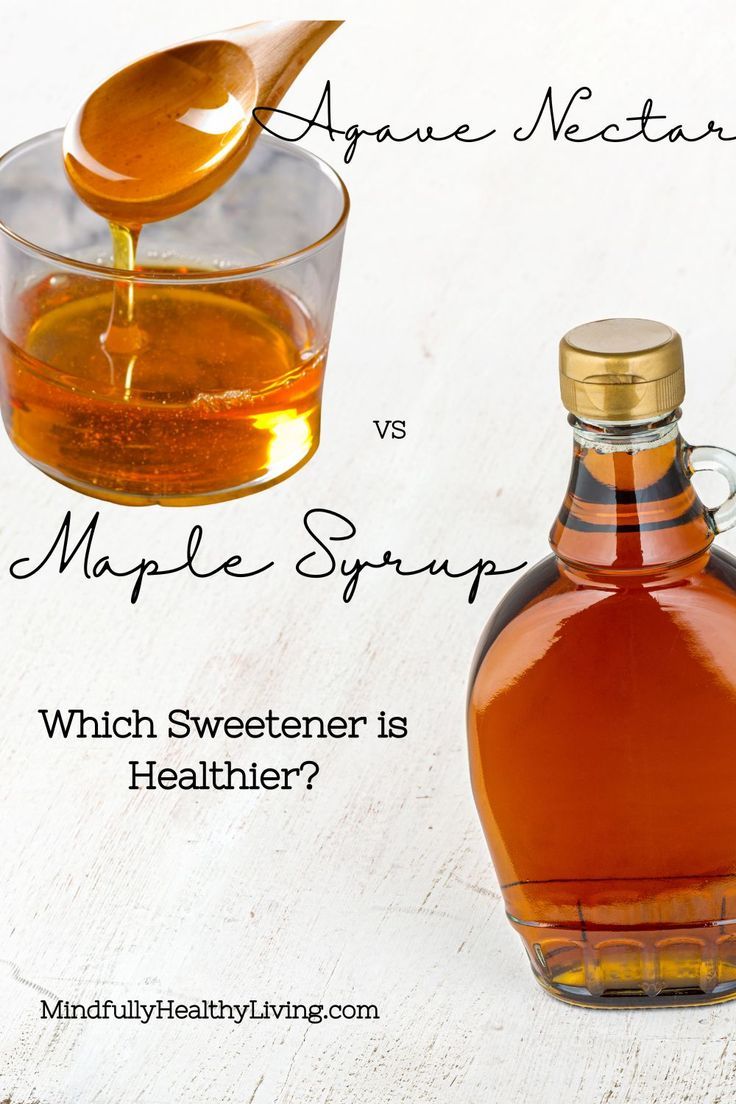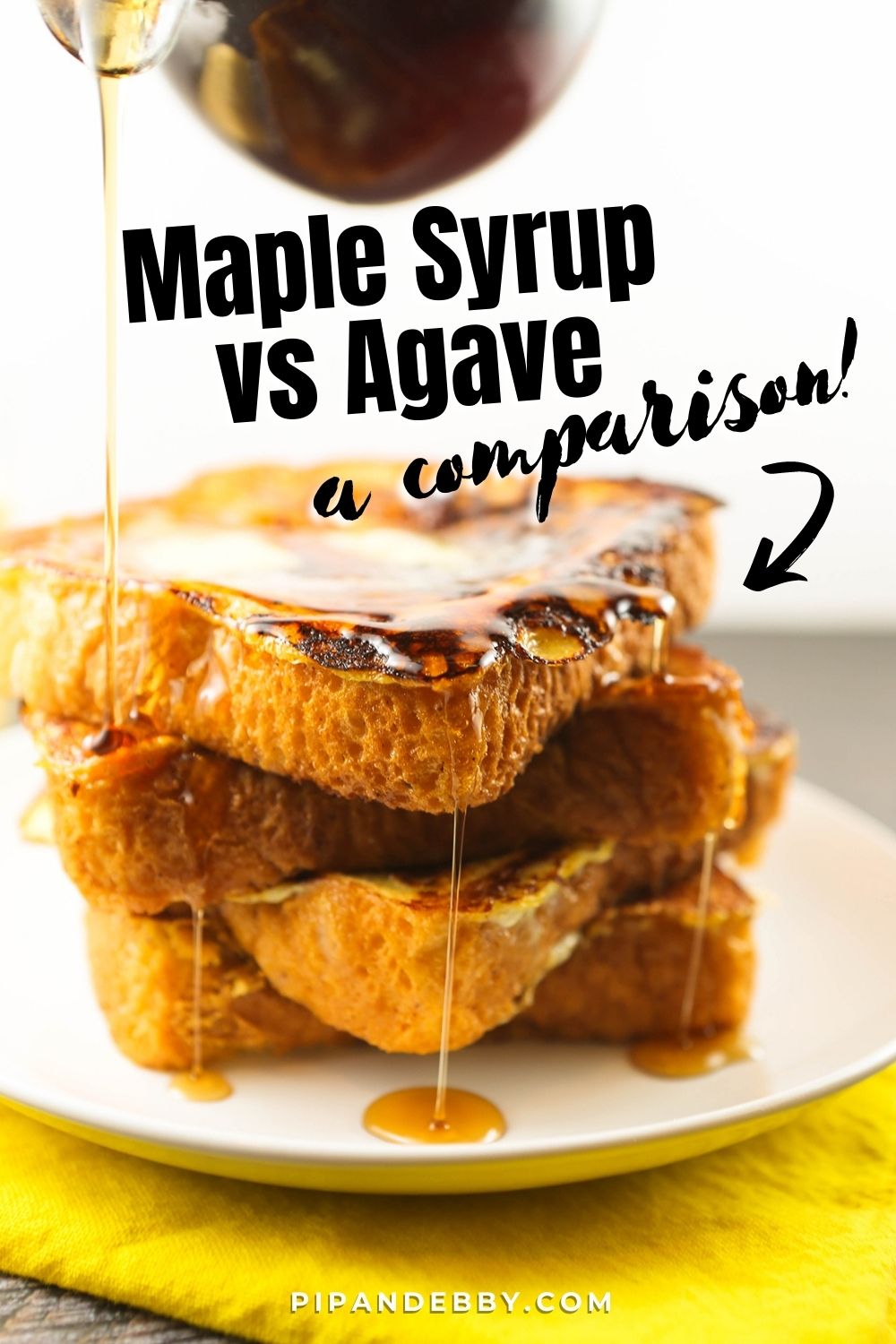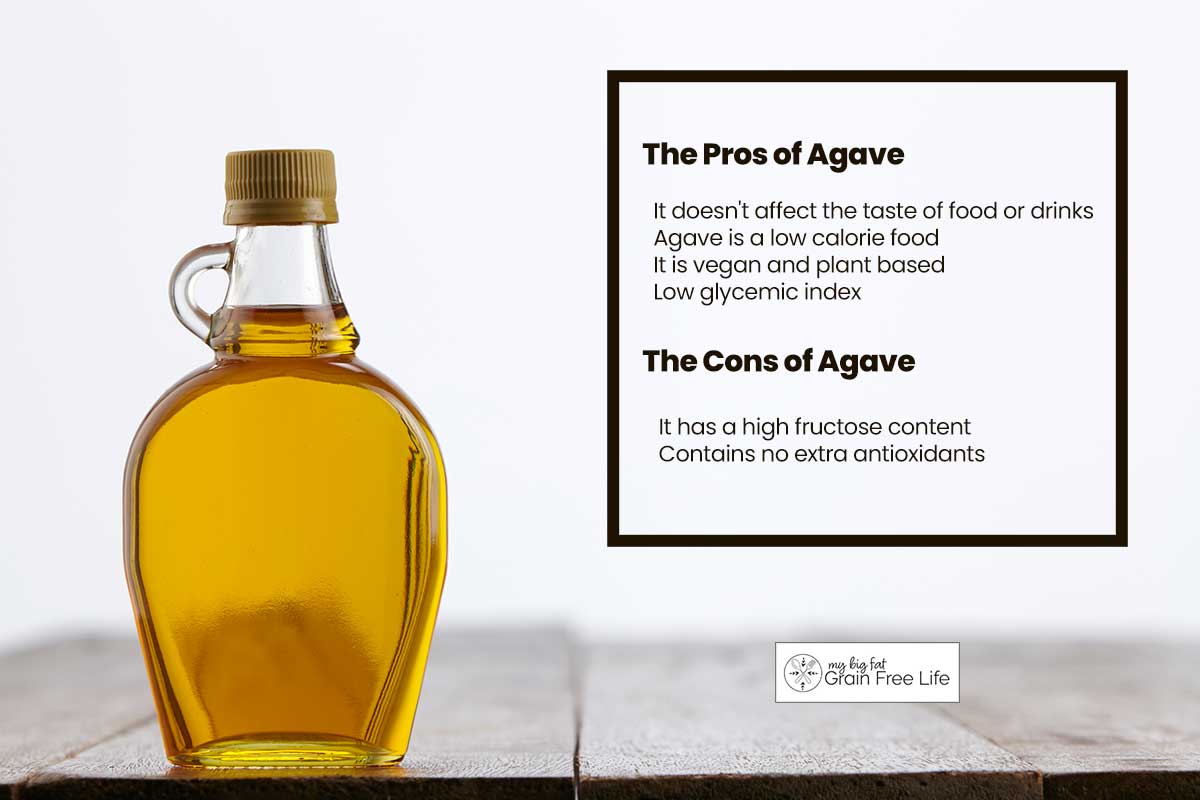Introduction

The introduction to the sweetener debate between maple syrup and agave sets the stage for comparing these two popular alternatives to traditional sugar. Many individuals are looking for healthier options to sweeten their food and beverages, and maple syrup and agave have gained attention for their natural origins and lower glycemic index compared to refined sugar. This article aims to provide an overview of the history and production processes of maple syrup and agave, as well as explore the nutritional content, taste, and flavor profiles of these sweeteners. By understanding the differences between maple syrup and agave, readers can make informed choices about which one suits their preferences and dietary needs.
Introduction To The Sweetener Debate: Maple Syrup Vs Agave
The popularity of maple syrup and agave as alternative sweeteners has sparked a debate on which option is better. Maple syrup, derived from the sap of maple trees, and agave, produced from the agave plant, have gained attention for their natural origins and lower glycemic index compared to refined sugar. People are increasingly opting for healthier options to sweeten their food and beverages. This debate explores the characteristics, nutritional content, and taste profiles of maple syrup and agave to help individuals make informed choices about their sweetener preferences.
Brief History And Production Process Of Maple Syrup And Agave
Maple syrup has a long history in North America, with Native Americans being the first to discover its sweet sap. They would collect the sap by tapping maple trees and reduce it to create a syrup. Today, the production process involves tapping maple trees and collecting the sap in buckets or through a tubing system. The sap is then boiled and reduced to remove the water content, resulting in the sweet maple syrup that we enjoy.
Agave, on the other hand, has a history rooted in Mexico. The agave plant has been used by indigenous cultures for centuries for its medicinal properties and to make natural sweeteners. The production process involves harvesting the agave plant, extracting the sap, and then boiling it down to create the sweet syrup. The sap of various agave species can be used to produce different types of sweeteners, including agave nectar and agave syrup.
Both maple syrup and agave require careful harvesting and processing to ensure the high-quality sweeteners that we use today.
Maple Syrup

Maple syrup is a natural sweetener with a rich history and distinct flavor. It is derived from the sap of maple trees, primarily in North America. The production process involves tapping the trees and collecting the sap, which is then boiled and reduced to create the syrup. Maple syrup is available in different grades, ranging from light to dark, each with its own unique taste and viscosity. It is often used as a topping for pancakes, waffles, and desserts, and can also be incorporated into marinades and glazes for a touch of sweetness.
Maple Syrup: Origins And Characteristics
Maple syrup has a rich history and unique characteristics that set it apart from other sweeteners. Its origins can be traced back to the indigenous peoples of North America, who discovered the sweet sap of maple trees and developed methods to collect and process it. The distinct flavor of maple syrup comes from the natural sugars and minerals present in the sap. It has a rich and complex taste with caramel notes, making it a favorite for topping pancakes, waffles, and desserts. Maple syrup also has a thick and viscous texture, adding depth and richness to any dish it is used in.
Different Grades Of Maple Syrup And Their Uses
Maple syrup is graded based on its color and flavor intensity. The different grades of maple syrup include Grade A Light Amber, Grade A Medium Amber, Grade A Dark Amber, and Grade B.
- Grade A Light Amber: It has a mild and delicate flavor, making it perfect for drizzling over pancakes, waffles, and desserts.
- Grade A Medium Amber: This grade has a slightly stronger flavor and is often used as a topping for oatmeal, yogurt, and ice cream.
- Grade A Dark Amber: With a robust flavor, this grade is ideal for adding depth to baked goods, marinades, and glazes.
- Grade B: This grade has the darkest color and strongest flavor. It is commonly used in cooking and baking, as well as for making maple-infused beverages and dressings.
Each grade offers a unique taste experience, allowing for a variety of culinary uses.
Agave

Agave is a natural sweetener that is derived from the Agave plant, primarily grown in Mexico. It has gained popularity as a healthy alternative to traditional sweeteners due to its low glycemic index and high fructose content. Agave is known for its sweet taste, similar to honey, making it a versatile ingredient in various recipes. It is commonly used as a substitute for sugar in baking, as a topping for pancakes or yogurt, or as a sweetener in beverages. However, it is important to note that while agave offers certain health benefits, it should still be consumed in moderation due to its high fructose content.
Agave: Origins And Characteristics
Agave, also known as the “century plant,” is a succulent plant that is native to Mexico. It has been cultivated for centuries by the Aztecs and other indigenous communities. Agave plants typically grow in arid climates and have long, thick leaves that store water. The sap of the agave plant is extracted to make agave syrup, a natural sweetener. Agave syrup is known for its light and mild flavor, similar to honey. It has a smooth and syrupy texture, making it a popular choice for sweetening beverages and desserts. Agave syrup is also a vegan alternative to honey.
Different Types Of Agave Sweeteners And Their Uses
There are several types of Agave sweeteners available, each offering unique characteristics and uses. Here are some popular ones:
- Agave Nectar: This is the most common and widely available Agave sweetener. It is a versatile liquid sweetener that can be used as a substitute for sugar in various recipes, including baking, cooking, and beverages.
- Agave Syrup: Similar to Agave nectar, Agave syrup is a thicker and more concentrated form of sweetener. It is perfect for drizzling over pancakes, waffles, or adding sweetness to desserts.
- Agave Powder: Agave powder is a powdered form of Agave nectar. It is often used as a natural sweetener in powdered drinks, smoothies, or sprinkled on top of cereals and yogurts.
- Agave Inulin: Agave inulin is a soluble fiber extracted from the Agave plant. It is often used as a low-calorie sweetener and prebiotic in foods and beverages.
These different types of Agave sweeteners offer various flavor intensities and are suitable for different culinary applications.
Nutritional Comparison

Comparing the nutritional content of maple syrup and agave reveals some interesting differences. In terms of calories, maple syrup contains more than agave. However, maple syrup has almost four times less sugar than agave. This makes it a better choice for those watching their sugar intake. Maple syrup also provides essential minerals such as calcium, potassium, and iron. On the other hand, agave has a lower glycemic index, meaning it causes less of a spike in blood sugar levels. It is important to note that both sweeteners should be consumed in moderation to maintain a balanced diet.
Nutritional Content And Health Benefits Of Maple Syrup
Maple syrup is not only delicious but also has some nutritional benefits. It is a good source of essential minerals like calcium, potassium, and iron. A quarter cup of maple syrup contains about 216 calories, making it a moderate calorie sweetener. Unlike agave, maple syrup has a lower fructose content, which is beneficial for those watching their sugar intake. It also contains antioxidants and anti-inflammatory compounds, which may contribute to heart health and overall well-being. However, it should still be consumed in moderation to maintain a balanced diet.
Nutritional Content And Health Benefits Of Agave
Agave is known for its unique nutritional profile. It is a natural sweetener that contains fewer calories compared to maple syrup, making it a popular choice for those watching their calorie intake. Agave is also low on the glycemic index, meaning it has a minimal impact on blood sugar levels. Additionally, it contains small amounts of essential minerals like calcium and iron. However, it is important to note that agave has a higher fructose content compared to maple syrup, which can be a concern for individuals with certain health conditions. It should be consumed in moderation as part of a balanced diet.
Taste And Flavor

When it comes to taste and flavor, Maple Syrup and Agave have distinct characteristics. Maple Syrup offers a rich and robust flavor with hints of caramel and woodsy notes. Its unique taste adds depth and complexity to dishes like pancakes, waffles, and desserts. On the other hand, Agave has a milder and more neutral taste, similar to honey but without the overpowering sweetness. This makes it a versatile option for both sweet and savory recipes, providing a subtle sweetness that complements a wide range of flavors. Ultimately, the choice between Maple Syrup and Agave will depend on personal preference and the desired flavor profile for your dish.
Taste And Flavor Profile Of Maple Syrup
Maple Syrup is renowned for its distinct taste and flavor profile. With its rich and robust characteristics, it offers a unique combination of flavors. The syrup has a deep sweetness with caramel undertones, providing a delightful hint of natural sweetness to any dish. Along with its sweetness, Maple Syrup also has subtle woodsy notes, which add complexity and depth. This unparalleled flavor profile makes Maple Syrup a popular choice for enhancing the taste of pancakes, waffles, desserts, and even savory dishes like glazed meats and roasted vegetables.
Taste And Flavor Profile Of Agave
Agave has a mild, sweet flavor with a hint of caramel. It has a more neutral taste compared to maple syrup, making it an ideal choice for those who prefer a subtle sweetness without overpowering the other flavors in a recipe. Agave nectar has a smooth and light texture, similar to honey. The darker varieties of agave nectar have a deeper and richer flavor, closely resembling the taste of honey. Overall, the taste of agave is versatile and can complement a wide range of dishes and beverages.
Conclusion

In conclusion, the choice between maple syrup and agave ultimately depends on personal preference and dietary needs. Maple syrup offers a rich, distinct flavor and is a great source of essential minerals. It is a good option for those looking for a natural sweetener with a lower glycemic index. On the other hand, agave syrup provides a milder taste and is a suitable substitute for vegans or those with a strict plant-based diet. It is important to consider factors such as taste, nutritional content, and intended use when deciding between these two sweeteners. Regardless of your choice, both maple syrup and agave can be enjoyed as flavorful alternatives to refined sugar.
Factors To Consider When Choosing Between Maple Syrup And Agave
When deciding between Maple Syrup and Agave as sweeteners, there are a few factors to consider:
- Taste preference: Maple Syrup offers a rich, distinct flavor, while Agave has a milder taste.
- Nutritional needs: Maple Syrup is a good source of essential minerals, while Agave has fewer calories and a lower glycemic index.
- Dietary restrictions: Agave is a suitable option for vegans and those following a strict plant-based diet.
- Intended use: Consider the flavor profile of each sweetener and how it will complement the dish or beverage you are sweetening.
- Sustainability: Maple syrup is considered a more sustainable option since it is derived from renewable resources.
Ultimately, the choice between Maple Syrup and Agave comes down to personal preference and individual dietary needs.
Final Thoughts And Recommendations
In conclusion, both Maple Syrup and Agave have their own unique qualities and can be enjoyed as sweeteners. When making a decision between the two, it is important to consider factors such as taste preference, nutritional needs, dietary restrictions, intended use, and sustainability. Ultimately, the choice between Maple Syrup and Agave comes down to personal preference and individual dietary requirements. It is recommended to try both sweeteners and decide which one suits your taste and health goals. Remember to always consume sweeteners in moderation as part of a balanced diet.
FAQ – Maple Syrup vs Agave
Q: What is the difference between maple syrup and agave?
A: Maple syrup and agave are both natural sweeteners but are derived from different sources. Maple syrup is made from the sap of maple trees, while agave syrup is obtained from the sap of the agave plant.
Q: Are maple syrup and agave syrup equally sweet?
A: Both maple syrup and agave syrup are sweet, but the sweetness level can vary. Maple syrup has a distinct rich and deep flavor, while agave syrup is generally milder and sweeter.
Q: Which one has a lower glycemic index – maple syrup or agave?
A: Agave syrup has a lower glycemic index than maple syrup. This means that agave syrup causes a slower and more gradual rise in blood sugar levels compared to maple syrup. However, moderation is still key as both syrups are high in natural sugars.
Q: Can maple syrup and agave be used interchangeably in recipes?
A: In most recipes, maple syrup and agave syrup can be used interchangeably as natural sweeteners. However, it’s important to note that they have different flavors and consistencies, which may subtly alter the taste and texture of the final dish.
Q: Which one is more suitable for vegans – maple syrup or agave?
A: Both maple syrup and agave syrup are vegan-friendly as they are derived from plant sources. Vegans can use both syrups without any concerns.
Q: Are maple syrup and agave syrup nutritious?
A: Maple syrup and agave syrup do contain some minerals and antioxidants, but the amounts are relatively low, and they should not be considered significant sources of nutrition. They are still viewed as a sweet treat and should be consumed in moderation.
Q: Can maple syrup or agave be used as a substitute for refined sugar?
A: Yes, both maple syrup and agave syrup can be used as an alternative to refined sugar in many recipes. However, it’s important to adjust the quantity and consider the impact on the taste and texture of the final dish.
Q: Do maple syrup and agave syrup have any additional health benefits?
A: Maple syrup contains small amounts of minerals like manganese and zinc, while agave syrup contains trace amounts of vitamins and minerals. However, these quantities are not significant enough to rely on these syrups as sources of nutrition or health benefits.
Q: How should maple syrup and agave syrup be stored?
A: Both maple syrup and agave syrup should be stored in a cool, dark place. It is preferable to refrigerate maple syrup after opening, while agave syrup can be stored at room temperature, though refrigeration can extend its shelf life.
Q: Are maple syrup and agave syrup suitable for individuals with diabetes?
A: It is recommended that individuals with diabetes or those on a low-sugar diet consult with a healthcare professional before consuming maple syrup or agave syrup. The sugar content and impact on blood sugar levels must be considered.

Everyone has had a recipe that looked great on paper but ended up burning once you got into the kitchen. Obviously, a recipe isn’t just about what ingredients go into it. Knowing how you prepare a dish has a strong impact on how it finally tastes.